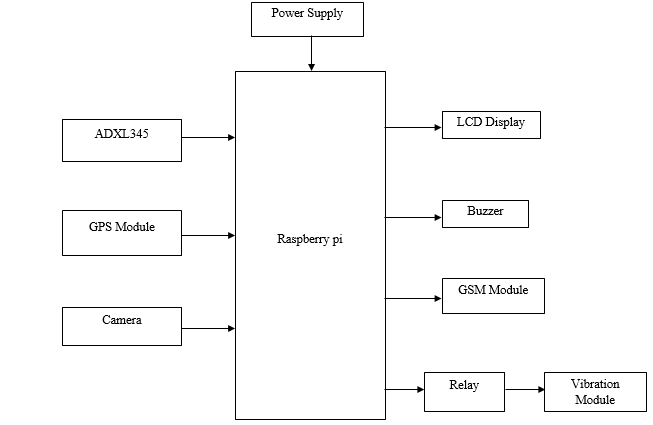Design of Drowsiness and Yawning Detection System
Objective
The main objective of this project is to design a drowsiness and yawning detection system using OpenCV. This system will leverage OpenCV's computer vision capabilities to detect signs of driver fatigue, such as drowsiness and yawning, and trigger timely alerts
Abstract
This project introduces a comprehensive system for driver drowsiness detection and alerting, leveraging the capabilities of Raspberry Pi, a camera module, ADXL-345 accelerometer, GPS module, GSM communication, buzzer, vibration motor, and an LCD display. The objective is to enhance road safety by actively monitoring and alerting drivers who exhibit signs of drowsiness during their journey. The core of this system utilizes a Raspberry Pi as the central computing unit, equipped with a camera module to continuously capture the driver's facial features and behavior. Computer vision algorithms are employed to analyze these images, focusing on indicators such as eye closure, head movements, and yawning, to detect signs of driver fatigue. To complement the visual data, an ADXL-345 accelerometer is utilized to monitor the vehicle's movements. Sudden or erratic vehicle actions are indicative of driver inattentiveness or drowsiness, triggering additional alerts. The combination of visual and physical data allows for more accurate and reliable drowsiness detection.
The system also incorporates a GPS module to determine the vehicle's location. In the event of drowsiness detection, the system utilizes a GSM module to send alerts and the vehicle's GPS coordinates to concerned individuals or authorities, enabling timely intervention in case of potential accidents. To immediately alert the driver, an integrated buzzer is used to emit audible warnings, while a vibration motor provides tactile feedback. The lcd display can also convey important alerts or reminders, enhancing driver awareness and engagement.
Keywords: Raspberry pi, GSM , GPS,ADXL345,Driver drowsiness detection, Camera.
NOTE: Without the concern of our team, please don't submit to the college. This Abstract varies based on student requirements.
Block Diagram

Specifications
Hardware Requirements:
- Raspberry pi
- MEMS sensor(ADXL-345)
- GPS Module
- Camera
- LCD Display
- Buzzer
- GSM Module
- Relay
- Vibration Motor
- Power supply
Software Requirements:
- Raspberry pi
- Python
Learning Outcomes
- Introduction to Microcontroller
- Microcontroller pin diagram and architecture
- Basic Coding
- Introduction to Embedded Software
- Interfacing LCD with microcontroller
- Working of power supply
- Working of rectifier
- About Project Development Life Cycle
- Planning and Requirement Gathering (software’s, Tools, Hardware components, etc.,)
- Schematic preparation
- Code development and debugging
- Hardware development and debugging
- Development of the Project and Output testing
- Practical exposure to
- Hardware and software tools.
- Solution providing for real time problems.
- Working with team individual.
- Work on Creative ideas.
- Project development Skills
- Problem analyzing skills
- Problem solving skills
- Creativity and imaginary skills
- Programming skills
- Deployment
- Testing skills
- Debugging skills
- Project presentation skills





 Paper Publishing
Paper Publishing
